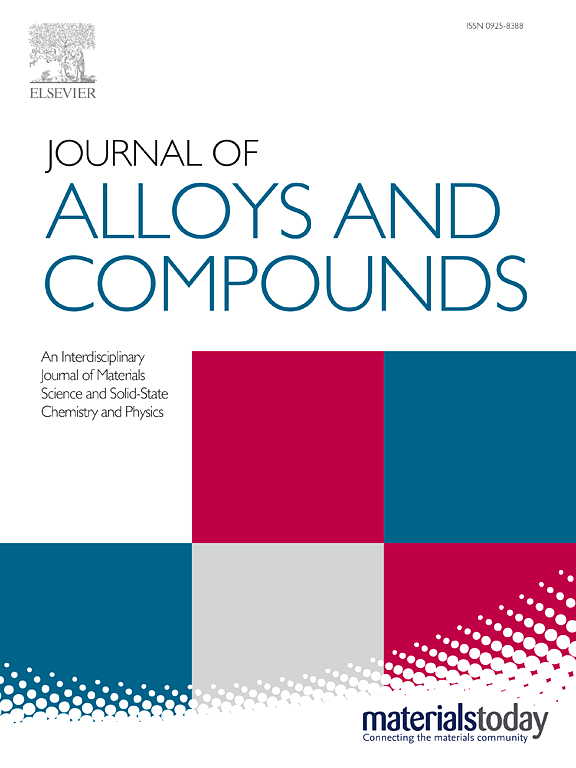Improved Leachability of CaO Modified Y2O3 Ceramic Cores for Investment Casting of Titanium Alloys
IF 5.8
2区 材料科学
Q2 CHEMISTRY, PHYSICAL
引用次数: 0
Abstract
Y2O3 ceramic cores are ideal adapters for titanium alloy casting owing to the excellent high-temperature chemical inertness. However, they are difficult to be chemically de-coring, which seriously limits their application in castings with complex internal cavity. In order to benefit the leaching behavior as well as the chemically compatible with titanium alloys, a new class of Y2O3-based cores modified by CaO was investigated in this work. The effects of CaO content on the microstructure, mechanical properties, chemical leachability, and interfacial reaction with TC4 alloy along with the internal cavity roughness were investigated. When the content of CaO was 4 wt.%, the porosity is 32.64%, and the room temperature strength was maintained at 19.89 MPa, which were close to the performance of ceramic cores with pure Y2O3. Citric acid solution was determined to be the ideal leaching solution, which was capable of dissolving Y2O3-CaO ceramic cores without affecting the quality and composition of titanium alloy. Compared to pure Y2O3 ceramic cores, the leaching behavior was significantly improved by 4 wt.% of CaO and the leaching time was reduced from 90 h to 6.5 h. It was further demonstrated that it has superior high-temperature chemical compatibility in liquid titanium alloys, and this work provides a new guidance for improved leachability of Y2O3 ceramic core for investment casting of titanium alloys.提高CaO改性Y2O3钛合金熔模铸造陶瓷芯的浸出性能
Y2O3陶瓷芯具有优良的高温化学惰性,是钛合金铸件的理想适配物。但化学去芯的难度较大,严重限制了其在复杂内腔铸件中的应用。为了提高其浸出性能和与钛合金的化学相容性,对CaO改性的新型y2o3基岩心进行了研究。研究了CaO含量对显微组织、力学性能、化学浸出能力、与TC4合金的界面反应及内腔粗糙度的影响。当CaO含量为4 wt.%时,孔隙率为32.64%,室温强度保持在19.89 MPa,接近纯Y2O3陶瓷芯的性能。柠檬酸溶液是理想的浸出液,能够在不影响钛合金质量和成分的情况下溶解Y2O3-CaO陶瓷芯。与纯Y2O3陶瓷芯相比,添加4 wt.%的CaO可显著改善其浸出行为,浸出时间由90 h缩短至6.5 h,进一步证明其在液态钛合金中具有优越的高温化学相容性,为提高Y2O3陶瓷芯在钛合金熔模铸造中的浸出性提供了新的指导。
本文章由计算机程序翻译,如有差异,请以英文原文为准。
求助全文
约1分钟内获得全文
求助全文
来源期刊

Journal of Alloys and Compounds
工程技术-材料科学:综合
CiteScore
11.10
自引率
14.50%
发文量
5146
审稿时长
67 days
期刊介绍:
The Journal of Alloys and Compounds is intended to serve as an international medium for the publication of work on solid materials comprising compounds as well as alloys. Its great strength lies in the diversity of discipline which it encompasses, drawing together results from materials science, solid-state chemistry and physics.
 求助内容:
求助内容: 应助结果提醒方式:
应助结果提醒方式:


